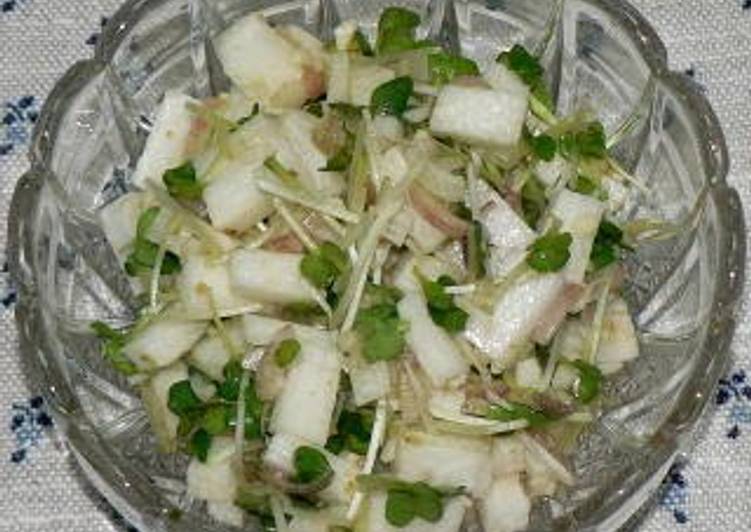Nagaimo Yam & Radish Sprouts with Myoga Ginger + Yuzu Pepper. Nagaimo is also known as Chinese yam, Korean yam There is some confusion between the two Japanese terms yamaimo and nagaimo, which are actually two distinct species of yam although the. Nagaimo is a tuber that when grated has a lovely slimy foamy texture. Today I'll show you how to prepare it in a Japanese dish cold soba noodles called.
 Dioscorea opposita or Shan Yao) has gained significant popularity as a healthy side dish to add to any Asian-themed meal.
In traditional Japanese cuisine, this yam is.
Contents About Nagaimo (Japanese Yam) Nutritional Value of Nagaimo All Categories.
You can Cook Nagaimo Yam & Radish Sprouts with Myoga Ginger + Yuzu Pepper using 5 ingredients and 2 steps. Here is how you cook it.
Dioscorea opposita or Shan Yao) has gained significant popularity as a healthy side dish to add to any Asian-themed meal.
In traditional Japanese cuisine, this yam is.
Contents About Nagaimo (Japanese Yam) Nutritional Value of Nagaimo All Categories.
You can Cook Nagaimo Yam & Radish Sprouts with Myoga Ginger + Yuzu Pepper using 5 ingredients and 2 steps. Here is how you cook it.
Ingredients of Nagaimo Yam & Radish Sprouts with Myoga Ginger + Yuzu Pepper
- It's of Nagaimo Yam.
- It's of pack Radish sprouts.
- Lets Go Prepare of Myoga ginger.
- It's of Yuzu pepper paste.
- Lets Go Prepare of Ponzu.
Nagaimo, yamaimo, Chinese yam, Japanese mountain yam, Korean yam. Nagaimo is often eaten raw, though that is rare for yams. Grated Nagaimo is called "Tororo" and used in dishes. A wide variety of chinese yam powder nagaimo powder options are available to you, such as packaging, form.
Nagaimo Yam & Radish Sprouts with Myoga Ginger + Yuzu Pepper step by step
- Peel the nagaimo yam and dice. Remove the roots from the radish sprouts and cut into 2 cm pieces..
- Mince the myoga ginger. Combine with the yuzu pepper and the ponzu, and then pour the mixture over the vegetables..
Nagaimo "Chinese yam" Dioscorea Opposita or even Dioscorea batatas. This post may contain affiliate links. Please read my disclosure policy for details. Wth a light color skin and hairy roots, Nagaimo is a type of mountain yams that can be eaten raw. I would like to grow Nagaimo, sometimes called Chinese or Japanese Yam.